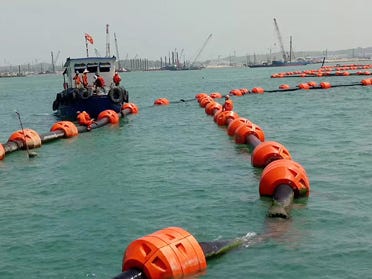Why Using HDPE Pipes is More Beneficial ?
The high-density polythene pipe market is growing. According to research, India HDPE Pipes Market for FTTx (Fiber to the x) industry was at $99.9 million in 2018 and will be reaching $233.5 million by 2026.
Origin of HDPE Pipes
The discovery of PE pipes began when people started looking out for a suitable and reliable medium to transport water and other fluid items from one place to another. During World War II, Low-density polythene was discovered and used in underwater cable coating. And In 1953, Karl Ziegler of the Kaiser Wilhelm Institute (renamed the Max Planck Institute) and Erhard Holzkamp discovered high-density polyethene (HDPE), a very close cousin to polyethene. Ziegler also won Noble Prize for Chemistry for his invention of HDPE.
What is HDPE?
High-density polyethene is a thermoplastic material. It is made of carbon and hydrogen atoms that are joined to produce Methane gas, which later converted to ethylene, and with the application of heat and pressure, it gets changed into polyethene.
High density polyethylene (HDPE), is a polyethylene thermoplastic that is made from petroleum. It has higher strength, is harder, and can withstand high temperatures.

HDPE pipes are convenient to use in underground piping because they are found to dampen and absorb shock waves minimizing surges that can affect the system. They also have the best joint pressure resistance and are also more abrasion and heat resistant.
HDPE Pipe Price
The prices of HDPE pipes depend on weight, length, diameter, manufacturer, and retailer. Most of the HDPE pipe manufacturing companies provide the price catalogue of tubes upon request.
HDPE Pipe Uses and Advantages
HDPE pipes are known for its lighter weight as compared to iron or galvanized pipes. These flexible and reliable pipes come with unmatched corrosion and chemical resistance.
HDPE pipes are available in a different size, colour, dimension and length. Buried electronic or telecommunication cables in HDPE pipes can stay protected with harsh weather, wildlife, vegetation, vehicle and vandalism as compared to aerial wires.
As HDPE pipes are lightweight, it easy to install and transport. It is also easy to repair these pipes as a damaged portion of the tube can be cut, and a new pipe can be connected through both ends. The process is known as butt fusion. On the other hand, damaged and rusted galvanized iron can be replaced only. So, in the long run, galvanized steel pipes are more expensive to use.

FAQs
Q. Is HDPE eco- friendly?
Ans: It can be considered eco friendly, as it is made from Type 2 post-consumer products HDPE recycled plastic. It is considered as the most environmental friendly plastic that does not generates harmful fumes into the environment.
Q. Can you Recycle HDPE pipe?
Ans: Yes. It can be recycled into other plastic products that are less mechanically demanding.
Q. What range of HDPE pipe diameter is available?
Ans: The pipe can be manufactured in variety of sizes. The common range of pipe sizes is from 32mm to 1200mm.
Q. How long does HDPE take to decompose?
Ans: It takes approximately 5 to 10 years to break down.

评论
发表评论